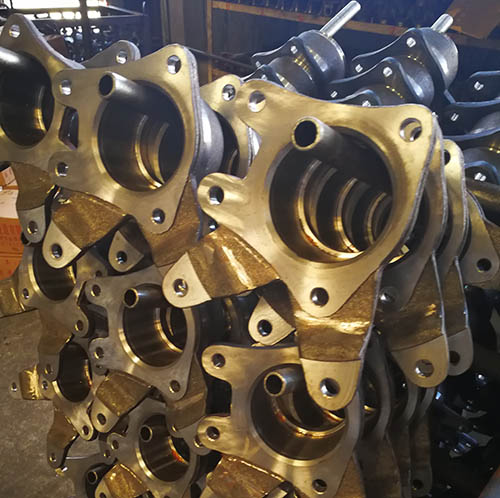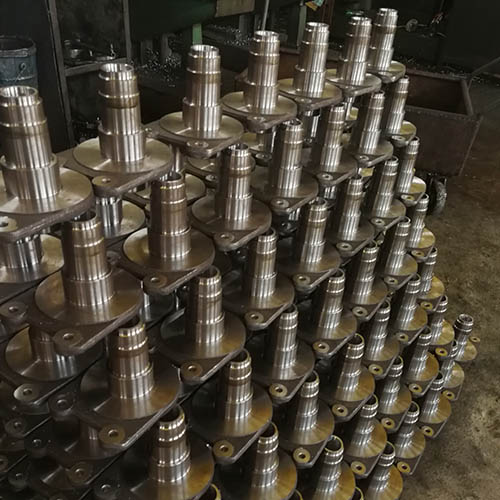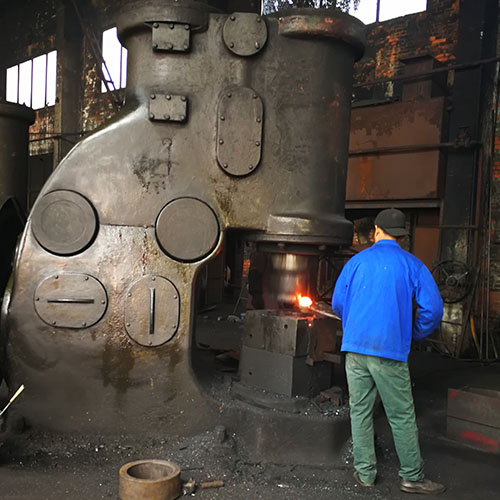The former reaction (a) can be regarded as the latter reaction (b) is a special case, i.e., m = n, show that M (mn) + ion but not a metal state, and thus a final equation is zero.
Available E = E Ó© - 0. 0591pH
The equilibrium condition is E Ó© = +0.0591pH (3)
It is well known that water is only stable under certain potential and pH conditions. The upper limit of water stability is the precipitation of oxygen, and the degree of stability is determined by the following formula:
O 2 +4H + +4e ==== 2H 2 0
E(O 2 /H 2 0)=1.229-0.0591 pH(P o2 =lO1kPa)
The lower limit of water stability is the precipitation of hydrogen, and the degree of stability is determined by the following formula.
2H++2e HZ
E(H + /H 2 )=-0.0591pH(P H2 =lO1kPa)
E 3 Ó© , E 1 Ó© , pH of the relevant reactions listed in the table below 2 Depreciation , and assuming that the metal ion activity is equal to 1, so that the temperature is equal to 298 K, the E-pH diagram of the Me-H 20 system can be made according to the chemical equation of the reaction of the types (a), (b), and (c). The E-pH diagram of the Zn-H 2 0 system was analyzed according to the above theoretical theory, as shown in the following figure. [next]

As seen from FIG whole Zn-H 2 0 system is divided into Zn 2+ and Zn (OH) 2, and Zn three regions, three regions also form a wet-leaching zinc refining, hydrolysis, purification and electrowinning processes The required stable area.
The leaching process is to create conditions for zinc and other valuable metals in the feed to pass through the (I) line and into the Zn 2+ zone. Hydrolysis and purification create conditions for Zn 2+ to remain in the Zn 2+ region while allowing impurities to enter the Me(OH) x region. The electrowinning is the creation of a condition to apply a potential on the cathode to cause Zn 2+ to enter the Zn region. The leaching process of wet zinc smelting is to use the stability of various metal ions in the leaching solution to dissolve the valuable metals such as zinc and pot into the solution, which is separated from the gangue in the raw material. At the end of the neutral leaching, the pH is adjusted to destroy the stability of impurities such as iron , aluminum , and tin, and impurities such as iron are converted into a solid phase to be precipitated and separated from the Zn solution.
 [next]
[next]
This shows that after the equilibrium state is reached, the concentration of H + and Zn 2+ ions can be very different. When the concentration of H + ions is small, a high zinc ion concentration can be allowed, that is, at the end of neutral leaching. In time, the acidity of the solution is lowered to a very low level, which creates conditions for removing impurities such as iron and arsenic .
It can be seen from the above formula that the hydrolysis pH of zinc ions is roughly as follows: when the zinc ion activity at 25 ° C is 1 mol/L, a 2 H+ = 10 -11.6 , that is, pH = 5.8.
The following table lists the metal-related Me-H 2 0 series E 3 Ó© , E 1 Ó© , pH 2 Ó© value.
About Me-H2O system E 3 Ó© , E 1 Ó© , pH 2 Ó© value | ||||
Me n+ -Me | Me(H)n | E 3 Ó© | E 1 Ó© | pH 2 Ó© |
Zn 2+ -Zn | Zn(OH) 2 | 0.417 | 0.763 | 5.85 |
Ag + -Ag | Ag 2 O | 1.173 | 0.7991 | 6.32 |
Cu 2+ Cu | Cu(OH) 2 | 0.609 | 0.337 | 4.6 |
BiO + -Bi | Bi 2 O 3 | 0.37 | 0.32 | 2.57 |
AsO + -As | As 2 O 2 | 0.234 | 0.254 | -1.02 |
SbO + -Sb | Sb 2 O 3 | 0.152 | 0.212 | -3.05 |
Tl + -Tl | Tl(OH) | 0.483 | -0.336 | 13.9 |
Pb 2+ -Pb | Pb(OH) 2 | 0.242 | -0.126 | 6.23 |
Ni 2+ -Ni | Ni(OH) 2 | 0.11 | -0.241 | 6.09 |
Co 2+ -Co | Co(OH) 2 | 0.095 | -0.277 | 6.3 |
Cd 2+ -Cd | Cd(OH) 2 | 0.022 | -0.41 | 7.2 |
Fe 2+ -Fe | Fe(OH) 2 | -0.047 | -0.44 | 6.64 |
Sn 2+ -Sn | Sn(OH) 2 | -0.091 | -0.136 | 0.75 |
In 3+ -In | In(OH) 2 | -0.173 | -0.342 | 3 |
Cr 2+ -Cr | CrO | -0.588 | -0.913 | 5.5 |
Mn 2+ -Mn | Mn(OH) 2 | -0.727 | -1.18 | 7.65 |
According to the table, E 3 ө , E 1 ө , pH 2 ө values ​​and the foregoing principles can be used to map the Me-H 20 O-pH of the metal, see the figure below.

As can be seen from the figure, at the end of the zinc neutral leaching, the pH of the leaching endpoint is controlled to be 5.2, and some metals can be removed as hydroxide precipitates.
B. Stability of metal oxides, ferrites, arsenates, and silicates during acid leaching. In the main raw materials of zinc smelting and oxidizing ore, metal oxides, ferrites, and arsenic are generally present. A variety of compounds such as acid salts and silicates, their ease of dissolution during acid leaching, or stability in acidic solutions, can be measured by the pH ө size, pH ө is difficult to leaching, pH ө large easily leached. For the above reaction the compound was dissolved in 25 ℃, pH at 100 ℃, 200 ℃ ө below.
Forging is a manufacturing process to shape the metal piece into desired shape by using hot working and hammer strength.
In our forging workshop, we mainly manufacture the Forging Parts from processing way die forging and free forging.
Forging is one of the oldest metalworking ways, it is more suitable for the metal pieces which require stronger than the equivalent cast and Machined Parts.
Advantages of forging parts:



Forging Parts
Forging Parts,Aluminum Forging Parts,Steel Forging Parts,Forging Valve Parts
Dandong Hengrui Machinery Co., Ltd. , http://www.hrcastings.com